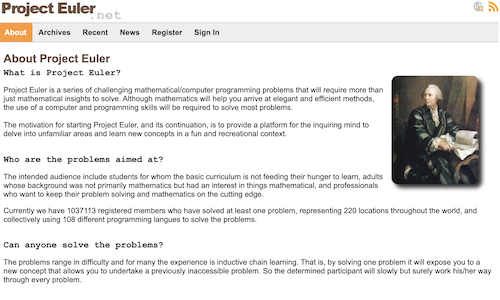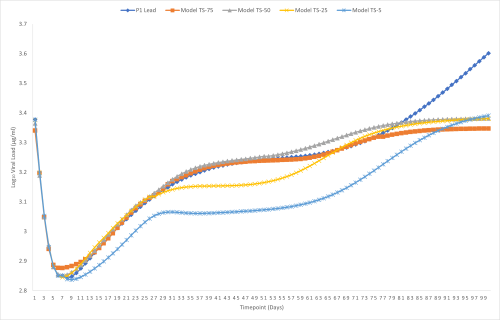Page Not Found
Page not found. Your pixels are in another canvas.
A list of all the posts and pages found on the site. For you robots out there is an XML version available for digesting as well.
Page not found. Your pixels are in another canvas.
Welcome!
This is a page not in th emain menu
Published:
This post will show up by default. To disable scheduling of future posts, edit config.yml and set future: false.
Published:
This is a sample blog post. Lorem ipsum I can’t remember the rest of lorem ipsum and don’t have an internet connection right now. Testing testing testing this blog post. Blog posts are cool.
Published:
This is a sample blog post. Lorem ipsum I can’t remember the rest of lorem ipsum and don’t have an internet connection right now. Testing testing testing this blog post. Blog posts are cool.
Published:
This is a sample blog post. Lorem ipsum I can’t remember the rest of lorem ipsum and don’t have an internet connection right now. Testing testing testing this blog post. Blog posts are cool.
Published:
This is a sample blog post. Lorem ipsum I can’t remember the rest of lorem ipsum and don’t have an internet connection right now. Testing testing testing this blog post. Blog posts are cool.
My solutions to Project Euler problems. 
We train and evaluate several Long Short-Term Memory-Recurrent Neural Network models in the task of predicting HIV viral dynamics using a synthetic dataset generated from running simulations of a phagocytosis based logistic clearance model. 
Published in Preprints, 2019
With the increasing use of genome sequencing as a surveillance tool for molecular epidemiology of antimicrobial resistance (AMR), databases and clear nomenclature for AMR gene families are critical. Due to the convoluted nomenclatural history of the integron-associated trimethoprim-resistant dihydrofolatereductase (dfr) gene family, we decided to conduct a literature review, comparative sequence analysis, and phylogenetic investigation of the dfr family, the results of which are presented here and available at the Comprehensive Antibiotic Resistance Database (CARD). Overall, literature review and phylogenetic analysis resolved gene name synonyms based on sequence. We recommend adoption of phylogenetic methods to help guide AMR gene naming efforts and relegation of misleading names to synonyms.
Download here
Published in The Canadian Journal of Psychiatry, 2019
Although Indigenous women are exposed to high rates of risk factors for perinatal mental health problems, the magnitude of their risk is not known. This lack of data impedes the development of appropriate screening and treatment protocols, as well as the proper allocation of resources for Indigenous women. The objective of this systematic review and meta-analysis was to compare rates of perinatal mental health problems among Indigenous and non-Indigenous women.
Download here
Published in Nucleic Acids Research, 2019
The Comprehensive Antibiotic Resistance Database (CARD; https://card.mcmaster.ca) is a curated resource providing reference DNA and protein sequences, detection models and bioinformatics tools on the molecular basis of bacterial antimicrobial resistance (AMR). CARD focuses on providing high-quality reference data and molecular sequences within a controlled vocabulary, the Antibiotic Resistance Ontology (ARO), designed by the CARD biocuration team to integrate with software development efforts for resistome analysis and prediction, such as CARD’s Resistance Gene Identifier (RGI) software. Since 2017, CARD has expanded through extensive curation of reference sequences, revision of the ontological structure, curation of over 500 new AMR detection models, development of a new classification paradigm and expansion of analytical tools. Most notably, a new Resistomes & Variants module provides analysis and statistical summary of in silico predicted resistance variants from 82 pathogens and over 100 000 genomes. By adding these resistance variants to CARD, we are able to summarize predicted resistance using the information included in CARD, identify trends in AMR mobility and determine previously undescribed and novel resistance variants. Here, we describe updates and recent expansions to CARD and its biocuration process, including new resources for community biocuration of AMR molecular reference data.
Download here
Published in Psychology, Health & Medicine, 2020
Pediatric chronic pain conditions impose substantial suffering on youth and the stress and suffering associated with these problems can affect the mental health of parents. The objective of this review is to describe and quantify links between youth chronic pain and parental mental health. A systematic search of five electronic databases was conducted from their inceptions to December 2019. Studies were included if they had an observational study design, recruited parents of youth aged 0–18 years and suffering from chronic pain, and mental health outcomes were assessed in parents. Of the seven studies that met our inclusion criteria, two were eligible for meta-analysis and suggested that the mental health of these parents may be worse overall. While this finding was not statistically significant, it was supported by a number of other eligible studies. Research also suggests that child pain may increase the frequency but not intensity of stress events for parents, that mothers may experience a greater burden of psychological symptoms than fathers, and that the parents of youth with chronic pain may exhibit better social functioning. More research is needed to clarify the nature of the mental health risks present in parents of youth with chronic pain.
Download here
Published in The Canadian Journal of Psychiatry, 2020
Parental psychopathology is a significant risk factor for mental health challenges in offspring, but the nature and magnitude of this link in Indigenous Peoples is not well understood. This systematic review examined the emotional and behavioral functioning of the offspring of Indigenous parents with mental health challenges.
Download here
Published in Journal of Developmental & Behavioral Pediatrics, 2021
Adverse prenatal and postnatal exposures may have long-lasting effects on health and development. However, it remains unclear whether being exposed to a greater number of prenatal adversities affects mental health risk. The current study examined whether exposure to maternal health problems prenatally is associated with an increasing risk of psychiatric morbidity in adolescents.
Download here
Published in American Journal of Translational Research, 2021
Quantitative ultrasound (QUS) is a non-invasive imaging modality that permits the detection of tumor response following various cancer therapies. Based on ultrasound signal scattering from the biological system, scatterer size, and concentration of microscopic scatterers, QUS enables the rapid characterization of tumor cell death. In this study, tumor response to ultrasound-stimulated microbubbles (USMB) and hyperthermia (HT) in tumor-bearing mice, with prostate cancer xenografts (PC3), was examined using QUS. Treatment conditions included 1% (v/v) Definity microbubbles stimulated at ultrasound pressures (0, 246, and 570 kPa) and HT treatment (0, 10, 40, and 50 minutes). Three ultrasound backscatter parameters, mid-band fit (MBF), 0-MHz spectral intercept (SI), and spectral slope (SS) were estimated prior to, and 24 hours after treatment. Additionally, histological assessment of tumor cell death and tissue microstructural changes was used to complement the results obtained from ultrasound data. Results demonstrated a significant increase in QUS parameters (MBF and SI) followed combined USMB and HT treatment (P<0.05). In contrast, the backscatter parameters from the control (untreated) group, and USMB only group showed minimal changes (P>0.05). Furthermore, histological data demonstrated increased cell death and prominent changes in cellular and tissue structure, nucleus size, and subcellular constituent orientation followed combined treatments. The findings suggested that QUS parameters derived from the ultrasound backscattered power spectrum may be used to detect HT treatment effects in prostate cancer tumors in vivo.
Download here
Published in BMC Cancer, 2021
The study here investigated quantitative ultrasound (QUS) parameters to assess tumour response to ultrasound-stimulated microbubbles (USMB) and hyperthermia (HT) treatment in vivo. Mice bearing prostate cancer xenografts were exposed to various treatment conditions including 1% (v/v) Definity microbubbles stimulated at ultrasound pressures 246 kPa and 570 kPa and HT duration of 0, 10, 40, and 50 min. Ultrasound radiofrequency (RF) data were collected using an ultrasound transducer with a central frequency of 25 MHz. QUS parameters based on form factor models were used as potential biomarkers of cell death in prostate cancer xenografts.
Download here
Published in Journal of Affective Disorders, 2021
Our objectives were to assess: (1) the effectiveness of existing mHealth apps for reducing symptoms of maternal depression and/or anxiety during the prenatal period and/or the first year postpartum, and (2) the app quality of commercially available apps targeting perinatal depression and/or anxiety.
Download here
Published in Pediatric Emergency Care, 2022
The aims of the study were (1) to determine how frequently patients with cyclic vomiting syndrome (CVS) present to the pediatric emergency department (ED) with CVS-related symptoms, (2) to identify variables in clinical presentation that occur frequently in patients with multiple ED visits, and (3) to compare ED management of CVS with recommended guidelines.
Download here
Published in Pediatrics, 2022
The nature and magnitude of the cognitive and mental health risks among the offspring of young mothers is not fully understood. Our objective is to examine the risk of mental disorders in these offspring.
Download here
Published:
This is a description of your talk, which is a markdown files that can be all markdown-ified like any other post. Yay markdown!
Published:
This is a description of your conference proceedings talk, note the different field in type. You can put anything in this field.
Undergraduate course, University 1, Department, 2014
This is a description of a teaching experience. You can use markdown like any other post.
Workshop, University 1, Department, 2015
This is a description of a teaching experience. You can use markdown like any other post.